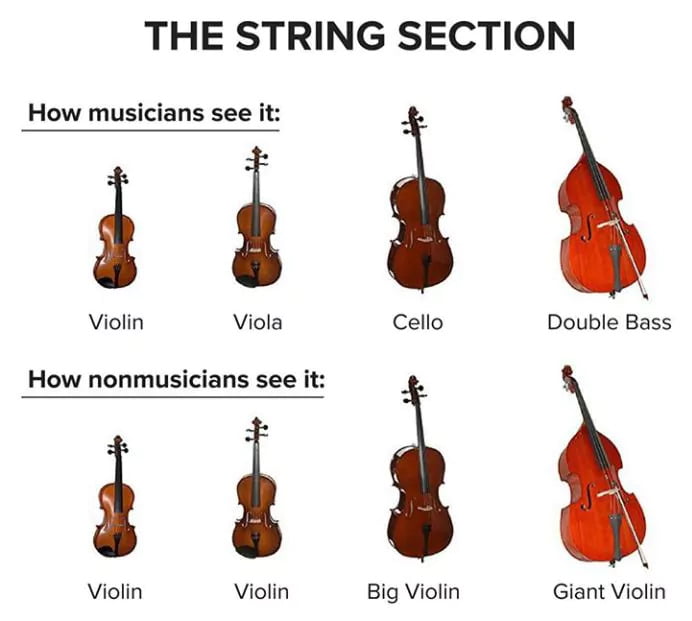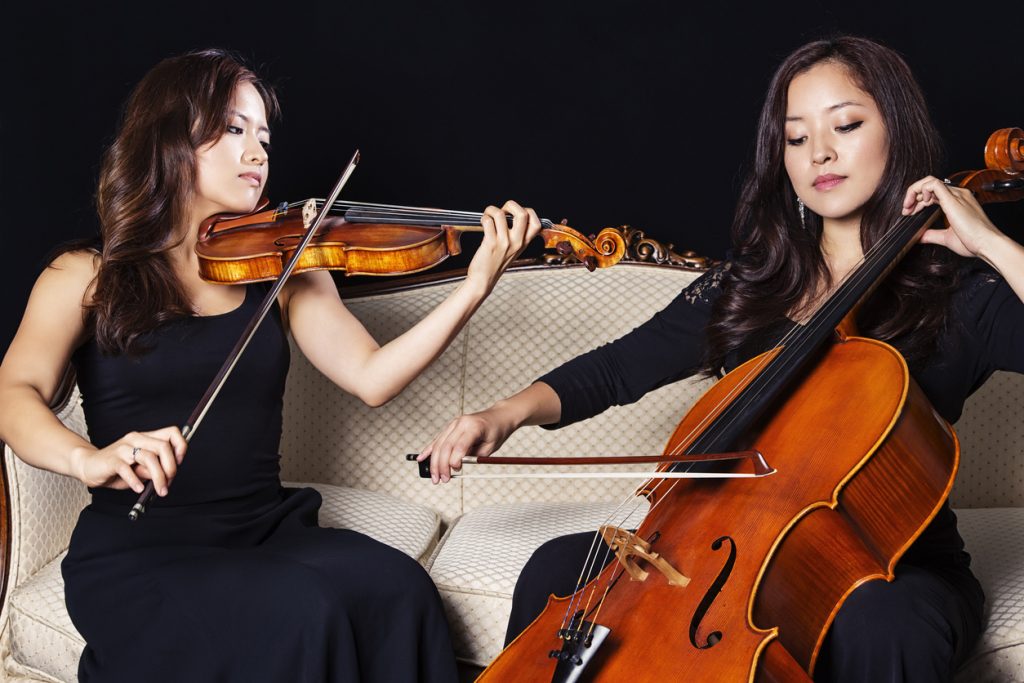The violin and cello are two iconic string instruments that have captured the hearts of musicians and listeners for centuries. While they belong to the same family of instruments and share many similarities, they also have distinct characteristics that set them apart. In this article, we will delve into the world of the violin and cello, exploring their differences and uncovering the unique qualities that make each instrument a captivating musical entity.
Contents
Exploring the Differences Between Violin and Cello
Size and Physical Appearance
One of the most noticeable differences between the violin and cello lies in their size and physical appearance. The violin is significantly smaller, measuring around 23 inches in length, with a compact body that rests comfortably under the chin of the player. On the other hand, the cello is much larger, averaging around 48 inches in height, with a deep, resonant body that is played while seated.
The violin’s petite size allows for greater mobility and agility, making it easier to handle and maneuver during performances. Its elegant, curvaceous shape contributes to its graceful and delicate aesthetic. Conversely, the cello’s substantial size and robust build lend it a commanding presence and a rich, resonant sound. Its deep, resonating tones are often described as warm, expressive, and soulful.

Playing Technique and Position
Another significant difference between the violin and cello lies in their playing technique and position. The violin is played by resting the instrument on the player’s left shoulder, with the chin placed on the chinrest. The player uses their left hand to press the strings against the fingerboard, while the right hand uses a bow to produce the sound by drawing it across the strings.
The cello, on the other hand, is played while seated, with the instrument positioned vertically between the player’s knees. The player’s left hand extends over the fingerboard to stop the strings, while the right hand uses a bow or plucks the strings with the fingers. The seated position allows the cellist to use the full length of the strings, producing a wide range of tones and dynamics.

Range and Sound Characteristics
Both the violin and cello possess distinct sound characteristics that contribute to their unique musical expression. The violin’s range spans four octaves, starting from G3 and extending up to E7. Its bright and vibrant sound is well-suited for melodic lines, intricate passages, and expressive solos. The violin’s versatility allows it to effortlessly navigate between delicate, lyrical passages and powerful, virtuosic displays.
The cello, with its lower pitch and larger size, has a range that spans from C2 to A5. Its deep, resonant tones are often described as rich, velvety, and full-bodied. The cello’s expressive capabilities shine through in its ability to convey a wide range of emotions, from melancholic and introspective melodies to powerful and thunderous bass lines. The cello’s warm and sonorous voice makes it an ideal instrument for melodic lines, harmonic accompaniment, and providing a solid foundation in ensemble settings.
Before playing, both instruments need tuning by tuner or other tools. To have the best result, remember to download tuner apps on your smartphone. Guitar Tunio is one of the best app you can find. The app features a reliable tuner for violin, cello, guitar, and many other stringed instruments, a rich chord library, and even more. This app is available on the App Store and Google Play, check it out to explore.

Role in Ensembles and Genres
Both the violin and cello play crucial roles in a variety of musical ensembles and genres. The violin is a staple in classical orchestras, chamber groups, string quartets, and solo performances. Its agility, versatility, and expressive qualities make it well-suited for virtuosic solos, intricate melodic lines, and blending with other instruments in ensemble settings. Additionally, the violin’s prominence in folk, jazz, and popular music genres further highlights its adaptability across different styles.
The cello, with its rich and resonant sound, serves as the backbone of the string section in orchestras. Its lower register provides a strong foundation and adds depth and richness to the overall ensemble sound. The cello’s expressive capabilities make it a favorite for solo performances, chamber music, and intimate settings. It is also a popular instrument in genres such as jazz, folk, and contemporary music, where its soulful and versatile nature can shine.
Construction and Design
In terms of construction, the violin and cello share similarities in their basic design and construction materials. Both instruments consist of a wooden body, a neck, a fingerboard, and four strings. The bodies are typically made from high-quality tonewoods such as spruce for the tops and maple for the backs and sides. The instruments are meticulously crafted and undergo careful shaping, carving, and varnishing processes to optimize their sound quality and aesthetic appeal.
However, due to the cello’s larger size, it requires more wood and a more complex construction process. The cello’s soundboard (top) has a greater surface area, allowing for a larger resonating chamber and enhanced tonal projection. The cello’s thicker strings and broader neck contribute to its ability to produce deep, resonant tones.
Instrumental Repertoire and Solo Literature
Both the violin and cello have an extensive repertoire of solo literature, concertos, chamber music, and orchestral compositions written specifically for them. The violin, with its long history and virtuosic capabilities, boasts a vast selection of solo concertos and showpieces by composers such as Bach, Mozart, Beethoven, and Tchaikovsky, among many others. The violin’s prominence in classical music has resulted in a rich and diverse collection of compositions that showcase its technical prowess and expressive range.
The cello, with its soul-stirring sound and expressive nature, also enjoys a wide range of solo literature. Composers like Bach, Dvořák, Haydn, Elgar, and Shostakovich have written masterful cello concertos and solo compositions that highlight the instrument’s lyrical qualities and emotional depth. The cello’s versatility is evident in its ability to perform as a solo instrument, in chamber groups, and as an integral part of the symphony orchestra.

In conclusion, the violin and cello, while sharing common ancestry and fundamental principles, are distinct instruments with their own unique qualities. The violin’s smaller size, bright tone, and virtuosic capabilities make it well-suited for melodic passages and expressive solos. The cello, with its larger size, deep resonant tones, and soulful qualities, offers a rich and robust sound that serves as a strong foundation in ensembles.
Both instruments have left an indelible mark on the world of music, captivating audiences with their emotive power and virtuosic performances. Whether it’s the soaring melodies of the violin or the deep and expressive tones of the cello, these instruments continue to enchant listeners and inspire generations of musicians to explore their boundless musical possibilities.
